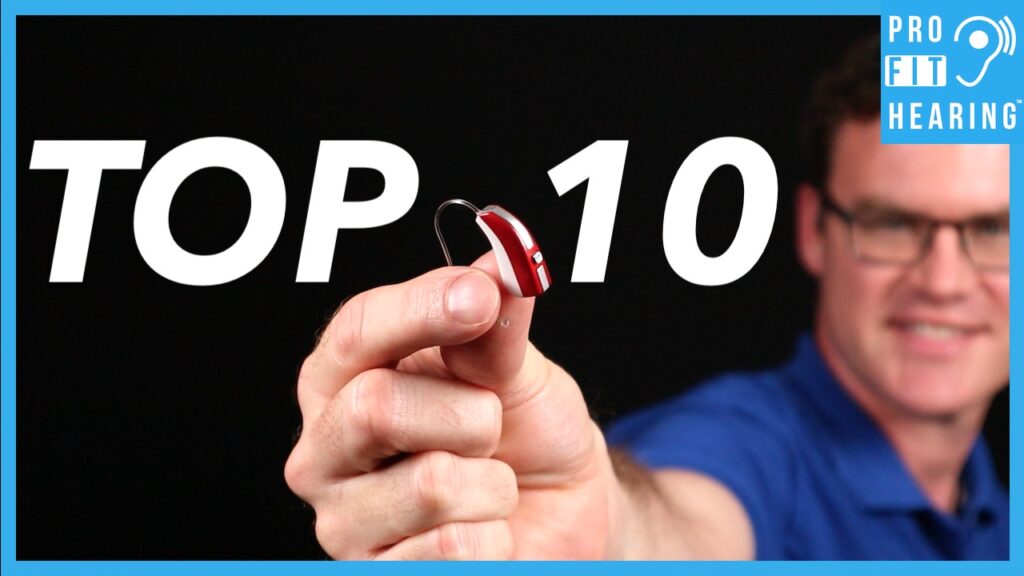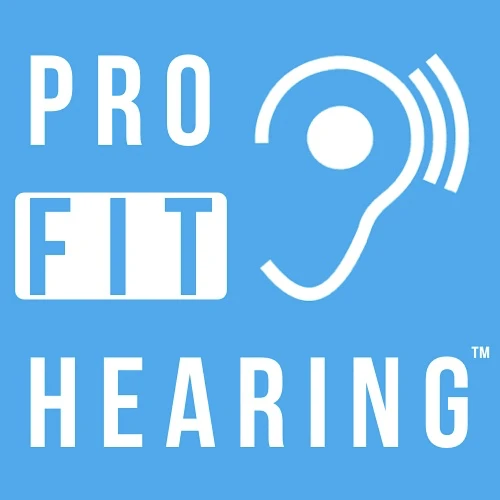Hearing Aid? – Top 10 Features of Today’s Best Hearing Aids (part 1)

Hearing Aid?
Is a hearing aid right for you? Well, in this post I’m talking about the top 10 features of today’s best hearing aids. Coming up!
Please SUBSCRIBE to our YouTube channel for weekly videos! The video link is at the end of this post.
Hi, I’m Dr. Derek – audiologist, audio engineer, and musician with Pro Fit Hearing.com bringing you the best insight into today’s latest hearing aids, headphones, and audio technology to improve your life. If you have concerns about your hearing, always consult with your local physician or audiologist.
Today, I’m talking about the top 10 features of today’s best hearing aids.
When someone says hearing aid, what do you think of? A big, bulky piece of plastic behind the ear that won’t stop whistling? Well maybe that’s what you had seen your parents or grandparents but today hearing aids are high tech, miniaturized computers that transform the lives of people who wear them.
Today’s hearing aids are precisely tuned to your level of hearing loss. The technology has advanced drastically. We’ve gone from a very basic hearing aid that was adjusted with just a tiny screwdriver to today’s high tech smart hearing aids that have features like Artificial Intelligence (AI), activity sensors, wireless connectivity, and smartphone integration. These technological changes have really transformed what a hearing aid is and are revolutionizing the hearing healthcare industry. There’s really never been a more exciting time to try hearing aids.
Hearing Aid Features #1-5
Feature #1: Digital hearing aids
Hearing aids today are digital. This means they have a computer chip that transforms all sound into data points of 1s and 0s. This is the language that computers understand. The digital coding of sound allows for very accurate hearing aid adjustment to accommodate the user’s hearing loss. The hearing aid is digitally programmed to provide more volume for the exact sounds that the person can not hear. This custom tuning is based upon all the results of the audiogram (or hearing test).
Feature #2: Fast processing
The computer chip in your hearing aid makes nearly instantaneous decisions on how to change sound in a way that sounds the best to your ears. Hearing aids constantly listen to all sounds around you and decide how to automatically filter out noise and maximize speech understanding and clarity. Older hearing aids required a manual adjustment by the user to filter out background noises, but now all of this happens behind the scenes. Hearing aids today have multiple settings that automatically switch on or off depending on the sounds in your environment. This will alllow you to maximize your ability to understand speech.
Feature #3: Noise canceling hearing aids
A hearing aid automatically reduces some of the background noise in your environment in two ways. First, multiple microphones in the hearing aid work together to focus on the sounds that are in the front of the person while reducing sensitivity to sounds from the side and back. Also, low frequency or bass sounds are reduced to remove additional noise so that important speech sounds can be emphasized. Some hearing aids today automatically determine where speech is coming from and then redirect the microphone sensitivity toward the speaker no matter if they’re beside or behind you.
Feature #4: Compact size
Hearing aids today provide more features in a more compact and discreet casing than ever before. One of the most popular styles is a miniature behind-the-ear (or BTE) hearing aid style. This rests behind your ear or under your hair. A small tube or wire is inserted into the ear to deliver sound.
Another option is a small hearing aid that is custom molded to fit inside the ear. Some of the smallest hearing aids are the completely-in-canal (CIC) and the invisible-in-canal (IIC) hearing aid. These two smallest hearing aids are more limited in how the user can adjust them and they’re more likely to need extra care and attention to cleaning, but their tiny size makes them popular for those who are concerned with appearance and it might be an appropriate solution for you.
Feature #5: Improved sound quality for music
Hearing aids can have a setting especially for music that engages automatically or is manually activated by the user. These settings allow for a more natural, less processed sound quality. Music sounds better with today’s hearing aids due to an extended dynamic range, an extended frequency response, and surround sound microphone settings. Historically hearing aids have been focused on speech frequency sounds to maximize speech understanding. Hearing aid users can now enjoy music while better understanding the conversations around them.
So, now when someone says ‘hearing aid’ you should think about incredible accuracy, speed, automatic features, a discrete size, and superior sound quality. These top features of today’s best hearing aids have really revolutionized the hearing aid industry. And they can definitely change your life for the better.
Make sure to read part two of this series HERE where I’ll discuss five more top features of today’s best hearing aids .
Question of the Day
So for today’s question. What hearing aid features excite you the most, and has your perception of hearing aids changed after watching this video? I’d love to know your thoughts, so please comment below.
Connect with Pro Fit Hearing on social media. Be a part of the Pro Fit Hearing community!
If you’re interested in hearing aids, click HERE for my FREE ebook, “How To Buy Hearing Aids”. Know what to ask your audiologist or hearing aid dispenser so that your hearing aids are easy to use and have all the features you’re looking for.
Remember, Pro Fit Hearing brings you the best insight into today’s latest hearing aids and audio technology to improve your life. If you have concerns about your hearing, always consult with your local physician or audiologist.
-Dr. Derek
